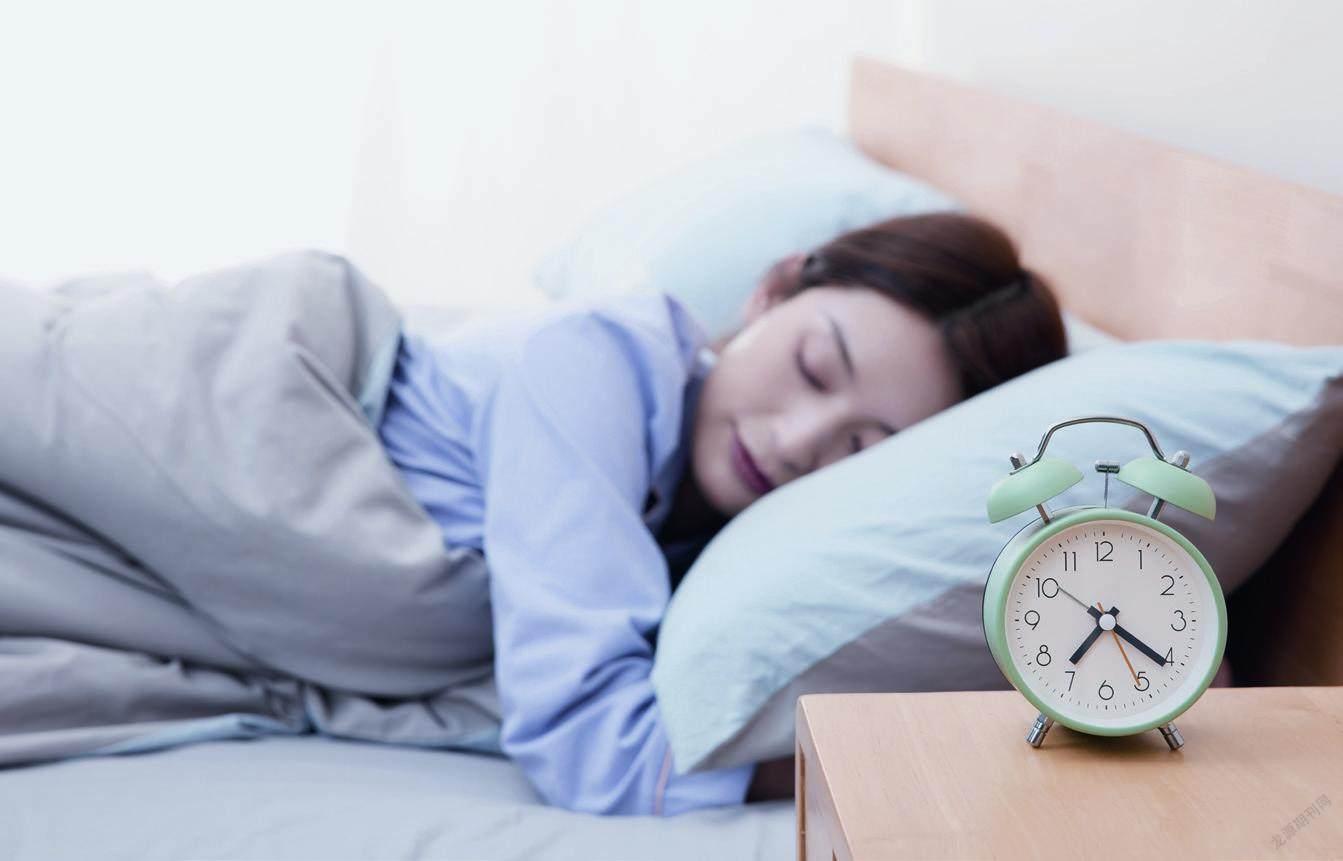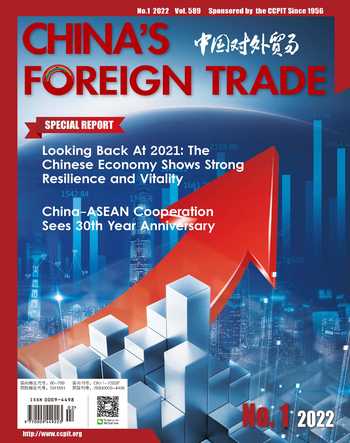The Increasing Market of Sleep Economy
By Lynn Yu
Recently, iiMedia Research issued a report titled 2021 Research Report on China’s Sleep Economy Industry, focusing on the bright future of the sleep economy in China, which has a market size exceeding RMB 400 billion in 2021. Nowadays, due to various factors such as pressure from life and work, overuse of cell phones and excessive information interference, more and more young people are suffering from insomnia. This situation was exacerbated in the first half of 2021 as a result of COVID-19, with people staying indoors for longer than usual. As a survey indicated, though many people have more time asleep, the time they went to bed was delayed by 2 to 3 hours, and the search volume for sleep problems increased by 43%. Data from the Chinese Sleep Research Society showed that more than 300 million people had sleep disorders in 2021, and as high as 38.2% of adults have or had sleep difficulties at some point in time.
With a national decreasing sleep quality, increasing the supply of sleep aid products and improving technology in such products, there is great potential in the sleep economy and this market will continue to grow quickly. According to iiMedia Research, during 2016-2020, the overall market size of the sleep economy in China grew from RMB 261.63 billion to RMB 377.86 billion, an increase of 44.42%, and it is expected to exceed RMB 400 billion in 2021.
There are more than 2,500 sleep-related enterprises in China
Sleep problems now concern more and more people in their daily life, meaning that demand for various sleeprelated products has been growing. This includes pillows and bedding as well as eye masks and ear plugs, from medication to electronic sleep aids. The market has attracted capital, and the sleep economy has been developing.
According to Tianyacha, there are more than 2,500 enterprises that include sleep aids, insomnia or sleep in the name and/or their business scope. Among them, 61% of sleep-related enterprises are limited liability companies, and 34% are self-employed. In terms of registered capital, more than 60% have a registered capital of less than RMB 2 million.
From the perspective of industry distribution, 64% of sleep-related companies are wholesale and retail enterprises. In addition, 15% are from the sector of scientific research and technical services. In terms of geographical distribution, Guangdong has the largest number of sleeprelated enterprises: more than 700. This is followed by Beijing, with nearly 500 sleep-related enterprises. This is followed by Shandong and Jiangsu, both of which have more than 100 sleeprelated enterprises.

Data from Tianyancha indicated that the number of sleep-related enterprises registered in China has risen significantly in last five years (including enterprises of all statuses), and 62% of the total enterprises were established within the last five years. Growth of the numbers of newly registered sleeprelated enterprises in China peaked in 2018, namely more than 560 new enterprises were registered. In 2019, that number came to nearly 400, and more than 470 in 2020, up 23% year-on-year.
Nearly 4 out of ten consumers buy sleep-aid products
On March 18, 2021, the Chinese Sleep Research Society and other organizations released a White Paper on Exercise and Sleep in 2021 in Beijing, indicating that over 300 million people in China are currently suffering from sleep disorders, while only 10% of the sports population in China deal with the problem of insomnia. Guangdong has the largest sports population and the largest population with adequate sleep. Besides, according to the white paper, those people who do exercises in the morning have the best sleep quality, since 55% believe their sleep quality is either “very good” or “relatively good”. In addition, those who sleep 7 to 8 hours per day are more enthusiastic about exercise.
According to the report, in this modern society which sees an accelerated pace of life, and a higher workload, more and more people struggle with sleep disorders for which the causes are complex, including psychological factors like stress and anxiety, as well as physiological factors such as physical conditions and sleeping posture. Of people aged 22 to 40, 74.3% have insomnia, 84.3% have bought sleep aid products, while nearly two thirds(66.3%) of people aged 26-40 have bought sleep improving health products. In the 21st century, which sees a highintensity and fast-paced working life, it is expected that main consumers of the sleep economy will continue to get younger.
In recent years, a great variety of sleep aid products have been on the market and the range has expanded significantly. According to the report, 40.36% of Chinese consumers facing sleep problems would choose sleep aid products, marking a high acceptance rate. Besides, respondents mainly bought sleep aid products online, with up to 70.02%, 49.92% and 39.22% consumers preferring comprehensive e-commerce platforms, official brand channels and short video platforms respectively.
In terms of price acceptance, in 2021 sleep aid products in the range of RMB 0 to 400 were the most popular, accounting for 72.6%. In fourth-tier and other cities, more consumers preferred low-priced products, with products below RMB 100 accounting for 42.0%, while couples with child were more likely to buy higher priced products.
It was worth noting that most sleep aid products now on the market focus on adjusting users’ emotions and stress, and differ in the quality and effects. According to a survey, 57.70% of respondents believed the actual effect of sleep aid products was minimal, while 57.70% considered sleep aid products were unreasonably high-priced and did not match the effect, meaning the difficulty in solving the sleep problems with complex causes still exists.
Sleep aid technology needs further improvement
It is said in Made in China 2025 that “intelligent manufacturing is the core of the new technological revolution, and also the main direction for manufacturing digitalization, networking and intelligence”. The same is true for the sleep economy. To secure smooth development of the sleep economy and its related products, it’s important to promote the application of revolutionary sleep product technology, so as to improve the product effects, and product quality and experience.
According to the report, existing smart sleep detection wristbands mainly function through motion detection with gravity sensors. Strictly speaking, such products can not really detect sleep status nor assess sleep quality, and its monitoring data is not accurate enough, but can only be used as a reference. Likewise, some sleep products on the market, such as sleep aid instruments and sprays, have not been proven effective by sufficient clinical research, and cannot be used as an auxiliary treatment for sleep problems.
Online stores and platforms are the main sales channels for various sleep aid products. However, in the future, as sleep aid products get more professional and apply more advanced technology, there needs to be a new sale mode of offline light stores integrating online and offline sale resources, to provide comprehensive product experiences. This mode may represent an important direction in the future.
Along with the consumption upgrading, the demand for sleep products will turn from economic and practical models to high-quality and smart ones. However, the primary challenge for the sleep economy in China is immature technology, or the lack of support from sufficient clinical verification, resulting in a weak sleep aid effect and immeasurable actual sleep improvement, restricting the update of sleep products and long-term development of the sleep economy.
Since 2019, the market has witnessed an increase in sleep related drink products, including sleep aid drinks from Want Want China, Wahaha, Mengniu, Junlebao and other beverage brands, but these products have failed as a whole, reflected in declining sales due to lack of results when it comes to improving sleep quality. Melatonin, the main ingredient of many sleep-improving health products, has side effects when taken in great amount, while its mechanism is still under study. In addition, due to the lack of relevant industry regulatory standards, and low requirement for market access, sleep aid products are of varying quality.
The more people suffer from insomnia, the more sleep aid products will be sold, including eye masks, soundproof earplugs, pillows and other traditional sleep products, and new products like sleep spray, aromatherapy lamps and so on with sleep-improving technology.
However, in general, the sleep economy is still in early stages, and the industry is developing now, though the future is bright as younger generations will face a higher life and work pressure. It is expected that more and diversified products will be developed, from traditional products like bedding textiles to sleep improving health products and sleep aid apps, and the market competition will be fiercer as more players emerge.
- China’s foreign Trade的其它文章
- Looking Back At 2021:The Chinese Economy Shows Strong Resilience and Vitality
- CCPIT Work Meeting 2021 Is Held Virtually in Beijing
- Joint Effort to Resolve Disputes in Intellectual Property Rights
- Six Industry Opportunities As A Result of Population Change
- Demands for Coal-fired Power Will Reach New High
- IDC’s Top 10 Predictions on China’s ICT Market In 2022

